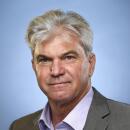The Siege Begins at Smog Palace
- Share via
DIAMOND BAR — These are days of siege at the South Coast Air Quality Management District. The caissons of commerce, fresh from the workers’ comp wars, are at the gates, carrying familiar ammunition. The AQMD, the war cries go, has become a drain on the economy, poisoning the California business climate. If something is not done, firms will flee en masse to less regulated environs. And so on.
The campaign started quietly about a year ago, but now appears to be reaching full pitch. Dozens of proposals to diminish district powers are pending in Sacramento. There have been attacks on individual AQMD board members, suggestions of expense account hanky-panky and other excesses.
In the field, smog inspectors detect escalating hostility from business owners. They regard this as both a reflection of the recession, and also an echo of anti-AQMD rhetoric raised by politicians and business lobbyists. As one inspector put it: “There are a lot of angry, frustrated people out there, and the last person they want to see is the AQMD inspector.”
*
Unlike workers’ comp, where the villain was a nebulous “system” that nobody understood, the AQMD offers a clear-cut target--a big building full of “bureaucrats,” and oh what a building. District critics call the new $75-million headquarters here Smog Palace. Actually, the 2-year-old compound is no more a palace than Diamond Bar is Paris. It consists of a few, utilitarian-looking concrete structures and could pass for a state college administration building. Still, it is an unfortunate symbol. Not only was it opened at a time when businesses the AQMD polices were in pain, the facility also projects a disturbing sense of permanence, an institutionalization of a problem. Smog warriors should work out of tents.
The AQMD has other vulnerabilities.
It is caught up, for instance, in a broader government movement to reel in agencies that raise their own revenues through fees, fines or special elections. These entities--such as irrigation districts, harbor authorities, and the AQMD--have escaped standard budget oversight, arguing that they pay their own way. In tight times, however, budget-makers have shown a keener interest in examining how all government-related money is spent--and finding revenue caches that might help more basic programs survive. One fast-moving piece of legislation would make the AQMD’s $107-million budget part of the state general fund--and give Sacramento greater influence over district smog efforts, a dubious gain.
As an agency that has made and enforced the rules, the AQMD also suffers from a reputation for arrogance and callousness. And yet, to visit the AQMD these days is to meet many people with different titles but seemingly the same job: holding the hands of factory owners, walking them through the rules, doing whatever possible to help them comply. Instead of simply enforcing regulations, the district now seeks to embark on a novel--and controversial--free market approach to smog control.
Unfortunately, this so-called “softer, gentler” approach does not seem to have defused the business lobby. Moreover, it has exposed the district on an opposite front. Environmentalists complain that the AQMD has gone soft. Sometimes it simply is not possible to win.
*
We’ll be hearing a lot about these issues now. If all unfolds according to form, we can expect grisly tales of economic carnage created by an out-of-control bureaucracy, the jobs that have been driven to Mexico, the waste within the palace. “They are not interested in solving the problem,” said one AQMD critic last Friday, sharpening his sound bites. “They are interested in keeping the bureaucracy alive, in their pensions, their perks and their power.”
The counterattack will seek to remind Californians that jobs are falling to the recession, not smog rules, and that timing of the siege suggests motives beyond regulatory reorganization. Indeed, an underlying premise raised by the anti-AQMD campaign is that cleaning the air is a luxury, to be pursued only in flush times. Not that anyone is quite so blunt about it.
“Nobody is that overt,” said James Lents, the AQMD executive director. “Everybody says they are for clean air. The criticism tends to be more indirect, like: ‘You are moving too fast now. . . . We think we have done enough. Why don’t you go after cars more? Go away. Leave us alone.”
What’s wearisome about this struggle is that it comes 50 years after Los Angeles newspapers started running urgent reports on what was then called “a low-flying cloud of acrid smoke.” Half a century later, the cloud is still there, and it requires an extraordinary faith in the politics of controversy to envision that, after the smoke clears, much public good will have come of this battle. If the smoke ever clears.
More to Read
Get the L.A. Times Politics newsletter
Deeply reported insights into legislation, politics and policy from Sacramento, Washington and beyond. In your inbox twice per week.
You may occasionally receive promotional content from the Los Angeles Times.











